Military
The First London General Hospital was installed in August 1914 at St Gabriel's College in Cormont Road. The College was a large modern building built in 1900, overlooking Myatt's Fields, a municipal park. The College emptied of young male students, who had enlisted to fight in the war, while the offices moved to Culham College.
Temporary administrative offices for the Hospital were erected in the grounds of the College while extensive work was carried out on the sanitary arrangements. All the WCs were at the top of the building and there were only two bathrooms for each 50 patients.
The neighbouring Cormont Secondary School was prepared for convalescent cases, but the building had no bathrooms and these had to be added. The 3-storey building housed 100 beds on each floor.
The Hospital was completed within three months and the College and School were connected by a long covered passage. The ward furniture was a miscellaneous collection, matching in some wards and not in others. Instead of lockers, bedside tables had been sent.
The College had a chapel, which was used every Sunday for Church Parade. There was also a small mortuary, arranged as a chapel. The first part of the funeral service was held there if the relatives did not want the funeral to take place anywhere else. The body was covered with a white linen pall, on which was outlined a red cross. Over this was laid the British flag. The Sister of the ward in which the patient had died always attended the service.
The medical and nursing staff were seconded from St Bartholomew's Hospital. The nursing staff were not well housed, sleeping in cubicles. Ward orderlies were men of all classes - medical students, clerks and even a hospital porter - and were trained under the supervision of the nurses.
Patient accommodation soon became crowded and, in April 1915, a house - 71 Upper Tulse Hill - was leased for use as a relief hospital. It had 20 beds and was known as the Margaret Hall Nursing Home.
In May 1915 all Territorial General Hospitals were required to establish Neurological Sections, for the treatment of patients with shell shock or neurasthenia.
In December 1915 huts were erected in Myatt's Fields to accommodate a further 520 patients. The huts were very long, but had the bathrooms and WCs arranged in annexes halfway down the wards on either side. The wards were brightened by the use of scarlet and other coloured blankets, and small pillows and pillowcases. Locker cloths, flower vases and pots gave a homely appearance.
At the beginning of 1916 Sir Charles Wakefield, the Lord Mayor, formally opened a new recreation hut for the more convalescent patients. Such a hut had been urgently needed as many patients were well enough to be up and about, but had only their ward beds to sit or lie on (the War Office regulations allowed only 40 chairs per 520 beds). The YMCA had offered £300 towards the cost of the building, which was estimated at £650. Another £300 had been needed to equip and heat it, but the Government paid for the lighting and the water supply.
By 1917 the Hospital contained 231 beds for officers and 1,038 for enlisted men.
A patients' workshop opened in April 1917 - a light, airy hut which had been fitted with carpenters' benches, forms and lathes. A Sale of Work and Exhibition was held to raise funds to equip the workshop further and to buy the necessary tools. The Sale raised £176. Prizes were given for the best entries. One of the winners was a model aeroplane, priced at 5 guineas (£5.25), made from 'found' objects - a tea chest, a broken splint, a piece of cigar box, cigarette tins and rubber from potted meat jars. Another first prize was for an embroidered black satin cushion cover. One patient submitted a model of a tank, despite the fact he had never seen one. Watercolour paintings illustrating a trench foot and a trench hand, with the pink fingertips, nails and toes turning black, were also exhibited.
In April 1918 the King and Queen visited, speaking to many of the patients. A few days before about 80 wounded officers and 80 other ranks had been admitted from France.
The Hospital closed in 1919.
Present status (September 2009)
The main Hospital building is now St Gabriel's Manor, an apartment block within a gated development. The walls, piers and gates of the former College are Grade II listed.
After the war the Cormont Secondary School became the Kennington Boys School, an annexe of the Kennington Secondary School. Today, the building is Grade II listed and is the Charles Edward Brooke Girls' School, administered by the Church of England.
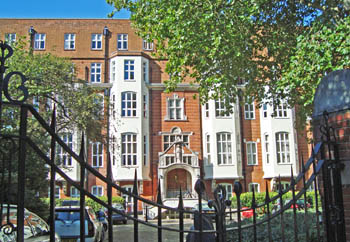
The front elevation of St Gabriel's Manor.
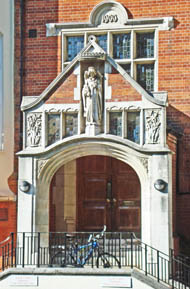
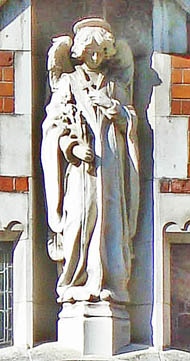
The main entrance with a statue of the Angel Gabriel above the porch.
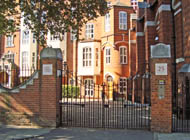
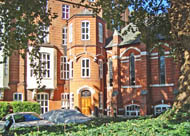
The side entrance to the building by the chapel (left) and the door to the chapel (right).
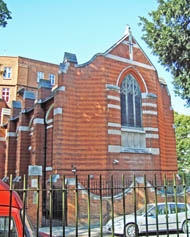
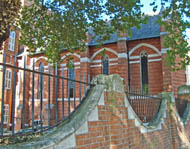
When St Gabriel's College became a seminary for Anglican priests, a chapel was added. It was consecrated in 1903.
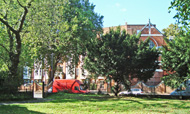
The building and chapel, as seen from Myatt's Fields opposite.
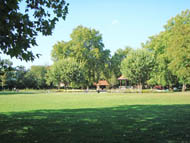
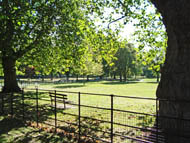
Myatt's Fields Park.
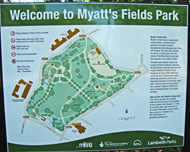

A map of the park (left). An explainer (right) gives details of the Park's history, including its role as an annexe for the Hospital.
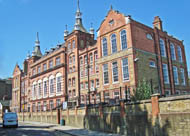
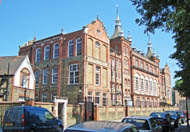
The Charles Edward Brooke Girls' School (Dennen Building) as seen from the north (left) and the south (right).
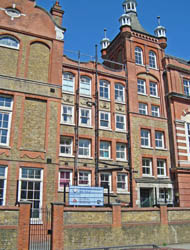
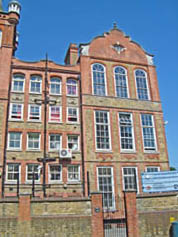
The original building, built in 1897 for the London School Board, consisted of a 3-storey central block with a 6-storey tower on each side. It was extended in 1912. The girls' entrance was in front of the left-hand block (left), while the boys' was on the right-hand side (right)
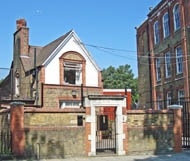
The Schoolkeeper's house.

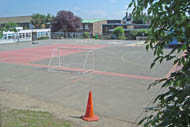
71 Tulse Hill, once the Margaret Hall Nursing Home, has not survived. The site is now part of the playground of the Holy Trinity Primary School.
(Author unstated) 1914 The reception of the wounded. The London Territorial Hospitals. British Medical Journal, 19th September, 518.
(Author unstated) 1915 Care of the wounded. British Journal of Nursing, 10th April, 295.
(Author unstated) 1915 Our Territorial Hospitals. British Journal of Nursing, 4th December, 462-463.
(Author unstated) 1917 The patients' workshop at the First London General. British Journal of Nursing, 28th April, 293.
(Author unstated) 1917 List of the various hospitals treating military cases in the United Kingdom. London, H.M.S.O.
(Author unstated) 1918 Royal sympathy with the wounded. British Journal of Nursing, 6th April, 241.
http://1914-1918.invisionzone.com
http://rcnarchive.rcn.org.uk
Return to home page